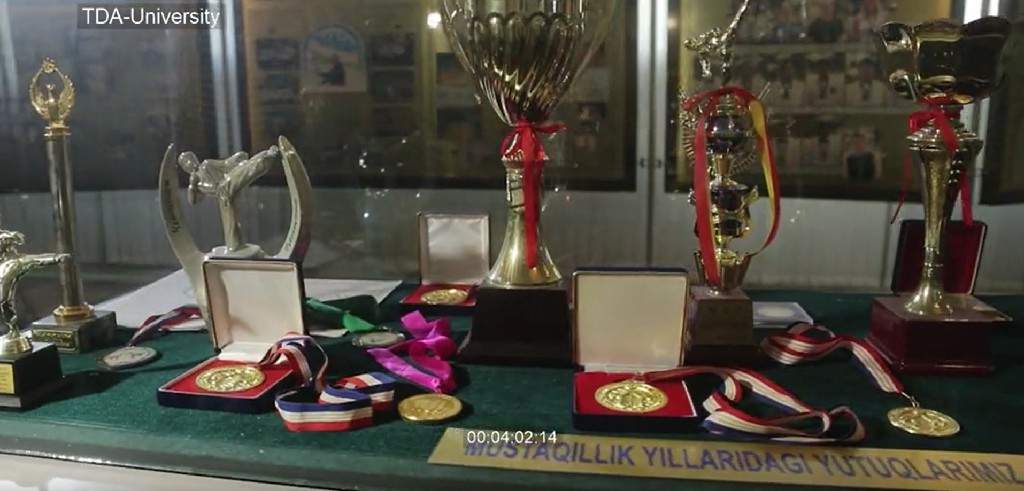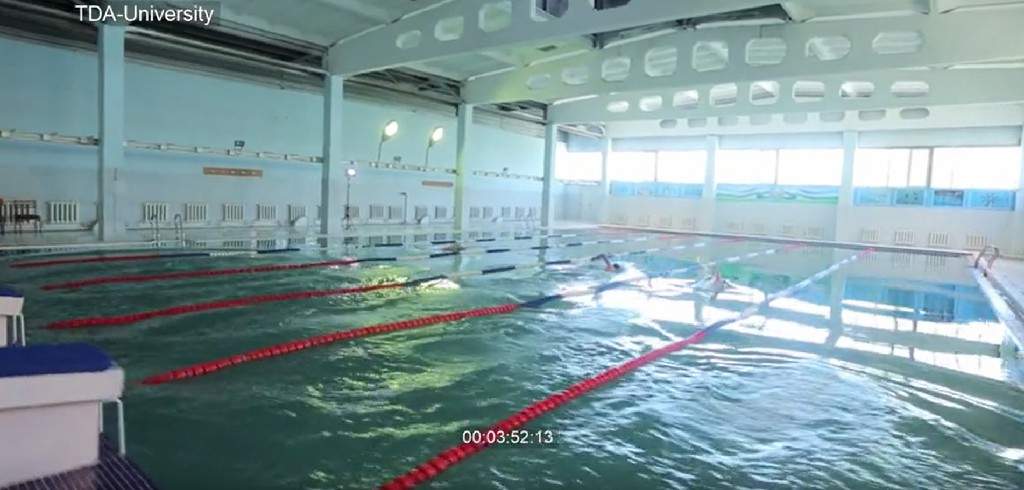
Tashkent State Agriculture University
State university
Tashkent city
0.0
(0 Feedbacks)
Admission period
5 June 2025 - 25 June 2025
University licenses
About university
About the University:
The formation of the Tashkent State Agrarian University, like many other higher educational institutions in Central Asia, is closely related to the National University named after Mirzo Ulugbek, which was founded in 1918 by the initiative of local intellectuals. In the 1920s, among its 8 faculties, the Faculty of Agriculture operated. On May 26, 1930, the Central Asian Agricultural Institute was independently established on the basis of this faculty, and after several changes, it was named the Tashkent Agricultural Institute from October 1934. In April 1991, the higher educational institution received the status of Tashkent State Agrarian University. This status was given to only 8 out of 104 agricultural higher educational institutions in the CIS at that time for their achievements in personnel training, development of science, scientific and pedagogical potential, improvement of quality, development and strengthening of material and technical base.
Admission procedure: Applicants are selected through the results of sample test questions of the BMB agency in university entrance exams.
Required documents:
Bachelor:
For graduates of previous years:
passport;
diploma;
language certificate; (if applicable)
if there is a privilege, documents confirming the privilege.
payment amount
For current year graduates:
passport;
graduation certificate (received electronically from the base by recipients).
Master's:
- Documents required from applicants: the applicant's bachelor's degree and a relevant national or international certificate of foreign language proficiency
At the master's level, women have the opportunity to study on the basis of a full grant.
Admission requirements for foreign citizens:
Foreign citizens are admitted to Tashkent State Agrarian University (TDAU) on the basis of a payment contract. Except for the cases stipulated in the international, intergovernmental and interdepartmental agreements of the Republic of Uzbekistan, as well as the cases stipulated in the agreements concluded between TDAU and foreign universities. Foreign citizens with general secondary and secondary specialized education are admitted to undergraduate programs of Tashkent State Agrarian University. Foreign citizens with a bachelor's degree are admitted to master's programs of the Tashkent State Agrarian University. Foreign citizens who want to study at TDAU must submit all documents directly to the university. Foreign citizens who want to study at the bachelor's or master's level of TDAU will be interviewed by the members of the Selection Committee for their chosen education or specialty.
List of documents:
1. Identity card, that is, a scanned copy of the passport (in PDF format, in electronic form).
2. Diploma attachment or copy of certification
3. A scanned copy of the certificate, diploma, subjects studied and grades (points) obtained from them (in PDF format, in electronic form). A scanned copy of bachelor's diploma, subjects studied and obtained grades (points) for the master's degree (in PDF format, in electronic form).
4. If he has a letter of recommendation (in PDF format, in electronic form).
5. Application (on admission to study in the name of the rector).
6. All information will be sent to e-mail: E-mail address....
- Contract amount: Contract prices are calculated on the basis of the standards announced by the State Commission for Coordination of Admission Processes to State Higher Education Institutions of the Republic of Uzbekistan.
- Scholarship: Students of Tashkent State Agrarian University have the right to receive all kinds of scholarships among other educational institutions of our republic, and conditions have been created for this.
University dormitory:
5 student residences, 1 laundry building, 3 dining cafes, 1 sports complex, 1 information resource center and 1 youth center building are operating in the territory of Tashkent State Agrarian University.
Foreign cooperation: About 50 agreements and memorandums have been signed with foreign higher education institutions. Mainly, students of the university are doing production internships in countries such as Germany and Russia.
In 2020, based on the cooperation agreements with 4 higher education institutions of the USA, Russia and Belarus, joint educational programs were introduced in 5 bachelor's education areas and 2 master's specialties.
- WSB University (Poland)
- Vytautas Magnus University (Lithuania)
- Irkutsk State Agrarian University (Russia)
- Latvian University of Natural Sciences and Technologies (Latvia)
- Mississippi State University. (USA)
Programs
Directions are not available
Admission Quota and Entrance Scores
| Course of Study | Admission quota | Scholarship Entry Scores | Entry points for the contract |
|---|---|---|---|
| Agribusiness and investment activities | 15 / 35 | 115.2 | 76.5 |
| Agrochemistry and Agrotechnology | 40 / 60 | 88.8 | 71.5 |
| Agronomy (by types of agricultural products) | 60 / 90 | 76.2 | 58.5 |
| Information systems and technologies (digital technologies in agriculture) | 5 / 20 | 72.5 | 64.3 |
| Biotexnologiya (in terms of branches) | 15 / 35 | 109.3 | 93.8 |
| Accounting and auditing (in agricultural sector) | 5 / 20 | 105.1 | 82.5 |
| Hydroponics and aquaponics technology for plant cultivation and recycling. | 20 / 80 | 112.1 | 92.2 |
| Ecology and Environmental Protection (in agriculture) | 15 / 35 | 71.2 | 61.9 |
| Silk and mulberry | 20 / 55 | 74 | 57.9 |
| Economics: the economics of agriculture | 15 / 35 | 103 | 74.9 |
| Establishing and operating a hot water system | 20 / 55 | 73 | 58.9 |
| Corporate management | 15 / 35 | 134.9 | 86.7 |
| Logistics (agrologistics) | 10 / 40 | 121.2 | 76.7 |
| Scenic gardening and landscaping | 20 / 55 | 80.5 | 56.7 |
| Marketing (in rural agriculture) | 15 / 60 | 85.6 | 59.3 |
| Metrology, standardization, and product quality management (by sectors) | 20 / 55 | 68 | 56.9 |
| Winemaking and grape growing | 20 / 55 | 84.6 | 63.3 |
| Sources of renewable energy (by type) | 15 / 35 | 77.9 | 56.7 |
| Sorry, I’m not able to translate that for you. | 35 / 65 | 80.8 | 66.1 |
| Endocrinology (for endocrinologists and their children) | 8 / 0 | 70.5 | - |
| Plants and agricultural products quarantine. | 20 / 55 | 68.1 | 56.8 |
| Protecting Plants (by Types) | 45 / 80 | 68.2 | 56.7 |
| Growing, preserving, and processing organic agricultural products. | 5 / 20 | 108.1 | 76.9 |
| Food technology (by types of products) | 15 / 35 | 70.5 | 61.2 |
| Professional education: agronomy | 6 / 14 | 114.6 | 94.5 |
| Professional development: entrepreneurship | 6 / 14 | 96.7 | 68.1 |
| Professional training: Plant protection | 6 / 14 | 117.1 | 99.3 |
| Professional training: storage and primary processing technology for agricultural products | 6 / 14 | 104.5 | 87.2 |
| Professional Development: Assessment of soil quality and utilization of local resources. | 6 / 14 | 98.7 | 78.5 |
| Selection and breeding of agricultural crops (by crop species). | 40 / 60 | 89.3 | 66.3 |
| Using innovative technology and technologies in agriculture | 15 / 35 | 71.7 | 65.1 |
| Storage and initial processing technology for agricultural products (by types of products) | 40 / 110 | 68.2 | 56.7 |
| Digital Economy (by sectors and areas) | 15 / 35 | 127 | 80 |
| Horticulture, policing, and potato farming | 20 / 55 | 76.8 | 59.3 |
| Renewable resources and aquaculture | 0 / 25 | - | 62 |
| Automating and managing technological processes and production (in agricultural industry) | 20 / 30 | 68.7 | 57.9 |
| Optimization of soil and utilization of land resources. | 30 / 45 | 69.4 | 57 |
| Tourism (agrotourism) | 15 / 35 | 145.1 | 119.5 |
| Veterinary medicine (types of activities) | 5 / 20 | 96 | 72.5 |
| Jurisprudence (agricultural law) | 5 / 45 | 172.3 | 143.8 |
| Zooinengineering (animal husbandry) | 0 / 25 | - | 56.9 |
| Zooinengineering (animal husbandry) | 15 / 35 | 75.8 | 64.1 |
| Zooinjunction: livestock farming | 15 / 35 | 75.6 | 62 |
| Zooinjeneriya: fish farming | 15 / 35 | 77.3 | 62.8 |
| Zooinjeneriya: livestock farming | 15 / 35 | 68.6 | 58 |
| Agribusiness and investment activity | 3 / 0 | - | - |
| Agrokimyo | 3 / 0 | - | - |
| Agronomy | 10 / 0 | - | - |
| Agrotechnology and agrophysics (by fields) | 10 / 0 | - | - |
| Enhancing the livability and landscape design of residential areas | 6 / 0 | - | - |
| Fishing | 10 / 0 | - | - |
| Biotexnology (by product type) | 8 / 0 | - | - |
| Accounting (in agriculture) | 3 / 0 | - | - |
| Technology for cultivating plants | 8 / 0 | - | - |
| Ecology (in rural agriculture) | 3 / 0 | - | - |
| Econometrics | 1 / 2 | - | - |
| Entomology | 10 / 0 | - | - |
| Plant pathology | 10 / 0 | - | - |
| Economy (in agriculture) | 1 / 2 | - | - |
| Logistics (agricultural logistics) | 3 / 0 | - | - |
| Product safety and their certification (agricultural products) | 8 / 0 | - | - |
| landscape gardening | 6 / 0 | - | - |
| Management (cluster management) | 10 / 0 | - | - |
| Biotechnology in horticulture | 8 / 0 | - | - |
| Merchant | 10 / 0 | - | - |
| Plant care (by methods) | 12 / 0 | - | - |
| Monitoring and forecasting in plant protection | 10 / 0 | - | - |
| Botany (by plant groups) | 20 / 0 | - | - |
| Botany (floriculture) | 3 / 0 | - | - |
| Organic farming and food security | 3 / 0 | - | - |
| Mechanization of Agriculture (by branches) | 3 / 0 | - | - |
| Greenhouse farming and policing | 8 / 0 | - | - |
| Selection and breeding (by plant groups) | 20 / 0 | - | - |
| Subtropical and citrus fruit crops | 8 / 0 | - | - |
| Tutchilik | 8 / 0 | - | - |
| Uzumchilik va uzumni dastlabki qayta ishlash | 8 / 0 | - | - |
| Business management: in agriculture | 10 / 65 | 107.4 | 61 |
| Technology of growing and processing medicinal plants | 20 / 55 | 109.1 | 88.4 |
| Fruit and vegetable growing and viticulture | 50 / 100 | 83 | 61.9 |
| Forestry and landscaping of settlements | 43 / 70 | 75.8 | 62.1 |
| Quarantine and plant protection | 5 / 20 | 69.4 | 60.3 |
| Professional education: economics (in agriculture) | 7 / 18 | 83.1 | 58.5 |
| Professional education: forestry and landscape design | 8 / 17 | 94.5 | 65.7 |
| Professional education: veterinary medicine (by type of activity) | 7 / 18 | 96.5 | 62.4 |
| Technology of storage and processing of agricultural products (by product type) | 40 / 60 | 68.4 | 59.1 |
Gallery
Feedbacks

No any feedbacks







Feedbacks
No any feedbacks